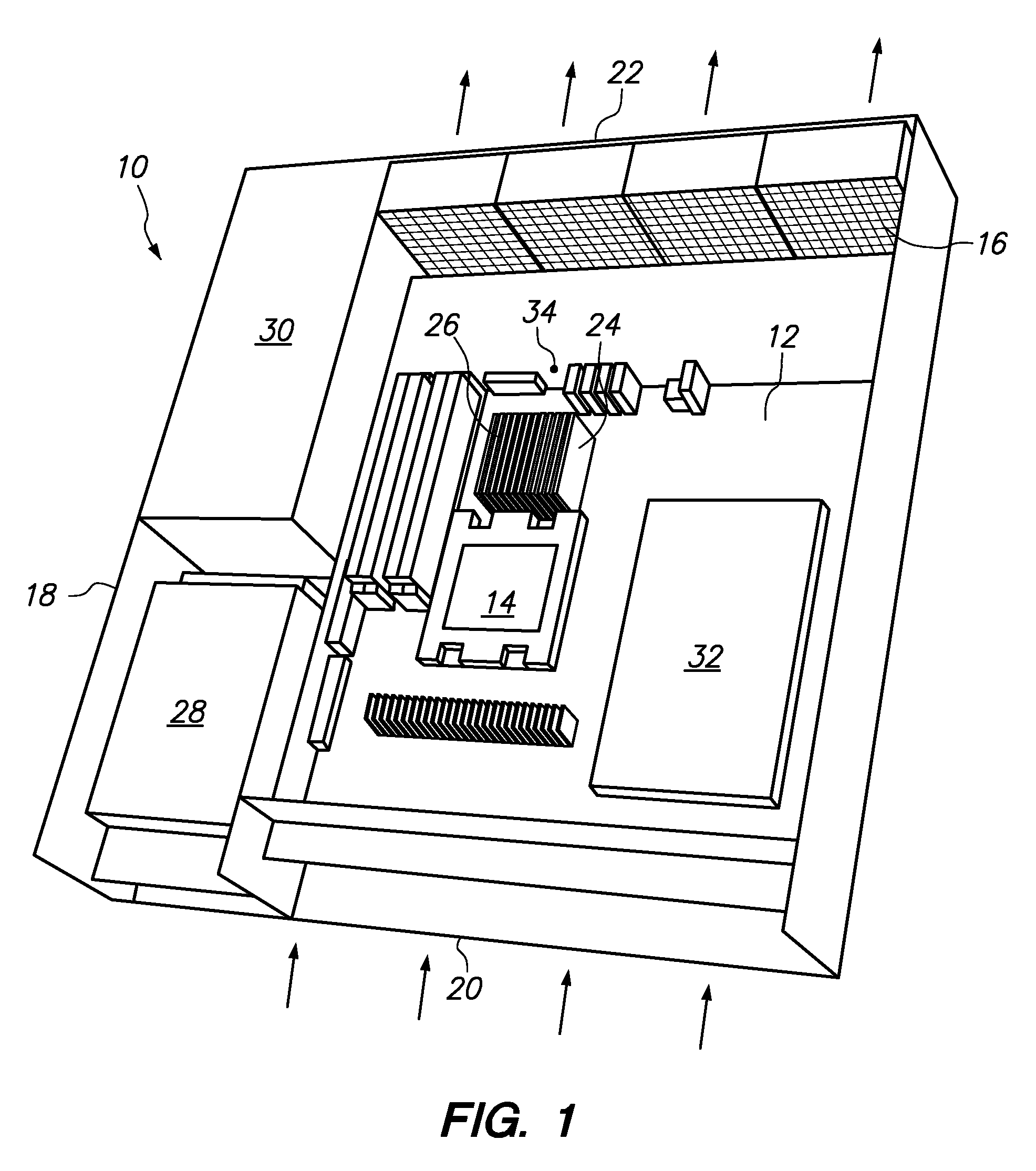Ducted air temperature sensor
a technology of temperature sensor and ducted air, which is applied in the direction of lighting and heating apparatus, electrical apparatus casing/cabinet/drawer, instruments, etc., can solve the problems of requiring motherboard customization, high noise, and consuming a significant portion of the electricity used in a data center
- Summary
- Abstract
- Description
- Claims
- Application Information
AI Technical Summary
Benefits of technology
Problems solved by technology
Method used
Image
Examples
example
Comparison of Thermal Sensor Measurements
[0031]Two circuit boards were prepared with identical components, layouts and dimensions, then placed into a common chassis having a fan pack that caused an equal amount of air from the same ambient air source to flow across the circuit boards. The first circuit board was laid out as shown in FIG. 1 and the second circuit board was laid out as shown in FIG. 2. The two circuit boards were mounted in separate modules in the common chassis according to FIG. 2, with the second circuit board positioned in the top bay. The two circuit boards were then operated with identical processor loads. For each of the two circuit boards, the temperature of the processor 14 and the temperature at a point directly downstream of the processor 14 at the edge of the circuit board 12 (point 34 in FIG. 1 and point 44 in FIG. 2) was measured. The steady state temperature differential between the processor 14 and point 34 in FIG. 1 was 14 degrees Celsius with wide flu...
PUM
 Login to View More
Login to View More Abstract
Description
Claims
Application Information
 Login to View More
Login to View More - R&D
- Intellectual Property
- Life Sciences
- Materials
- Tech Scout
- Unparalleled Data Quality
- Higher Quality Content
- 60% Fewer Hallucinations
Browse by: Latest US Patents, China's latest patents, Technical Efficacy Thesaurus, Application Domain, Technology Topic, Popular Technical Reports.
© 2025 PatSnap. All rights reserved.Legal|Privacy policy|Modern Slavery Act Transparency Statement|Sitemap|About US| Contact US: help@patsnap.com



